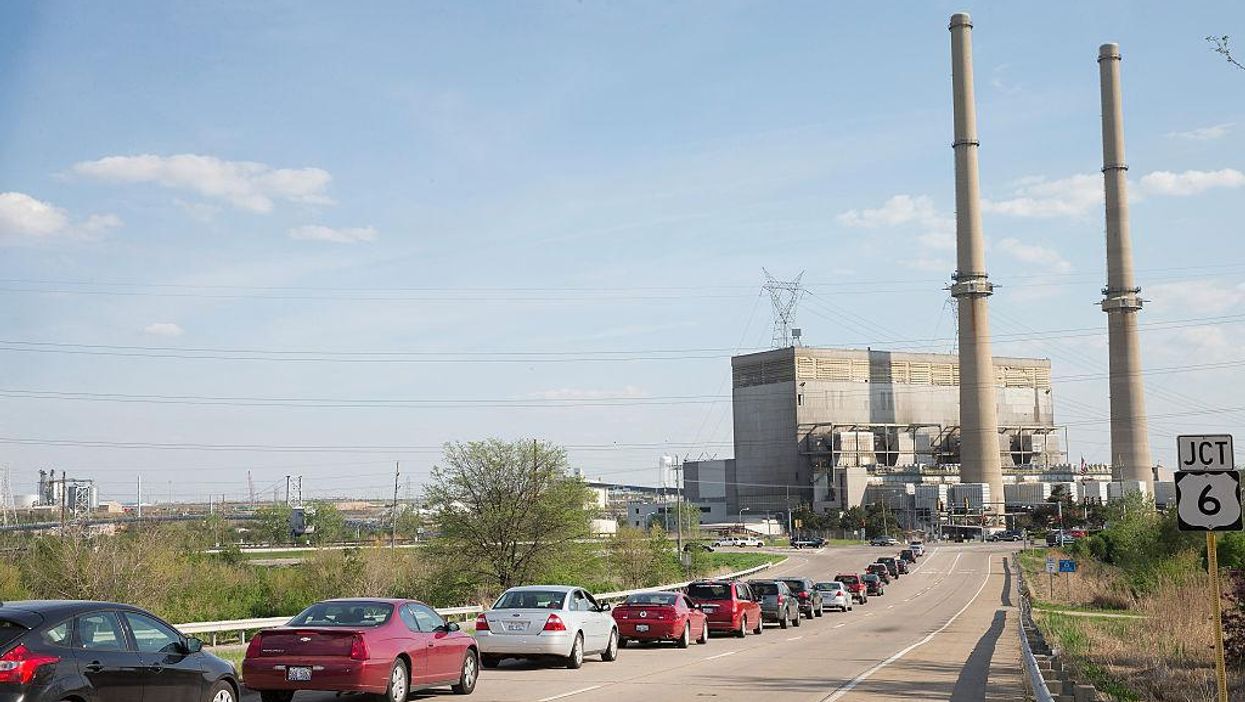
Scott Olson/Getty Images

The U.S. federal government will dole out $3.5 billion for a carbon capture project to attempt to minimize the damage of climate change. In a statement released on Thursday, the U.S. Department of Energy announced the massive financial investment into a "program to capture and store carbon dioxide (CO2) pollution directly from the air."
The Department of Energy promised the $3.5 million climate change project would help in "prioritizing community engagement and environmental justice."
"The Regional Direct Air Capture Hubs program will support four large-scale, regional direct air capture hubs that each comprise a network of carbon dioxide removal (CDR) projects to help address the impacts of climate change, creating good-paying jobs and prioritizing community engagement and environmental justice," the Department of Energy statement reads. "In addition to efforts to deeply decarbonize the economy through methods like clean power, efficiency, and industrial innovation, the widespread deployment of direct air capture technologies and CO2 transport and storage infrastructure plays a significant role in delivering on President Biden’s goal of achieving an equitable transition to a net-zero economy by 2050."
"Each of the projects selected for the Regional Direct Air Capture Hubs program will demonstrate the delivery and storage or end use of removed atmospheric carbon" the DOE statement reads. "The hubs will have the capacity to capture and then permanently store at least one million metric tons of CO2 from the atmosphere annually, either from a single unit or from multiple interconnected units."
Last December, President Joe Biden signed an executive order to ensure that the U.S. government will have net-zero emissions no later than 2050. The Guardian reported last year, "The government will cut its emissions by 65% by the end of this decade, before reaching carbon neutrality by 2050."
The locations of the hubs haven’t been disclosed as of yet.
American University defines Direct Air Capture with Carbon Storage (DACCS) as:
An approach to carbon removal in which mechanical systems capture carbon dioxide (CO2) directly from the atmosphere and compress it to be injected into geological storage or used to make long-lasting products, such as cement. There are a variety of technologies for doing this. Some use chemicals that bind with CO2 in the air and release the CO2 when heated. Others use changes in temperature, humidity, or electrical charge to capture and release CO2. Other uses of direct air capture technology, such as using captured CO2 in greenhouses or to manufacture synthetic fuels, are a form of carbon capture and use or “carbon recycling” because the CO2 returns to the atmosphere quickly after the products are consumed. Synthetic fuels made with direct air capture (“air-to-fuels”) could still contribute to mitigating climate change by displacing fossil fuels.
U.S. Secretary of Energy Jennifer M. Granholm cited a recent report from the United Nations' Intergovernmental Panel on Climate Change (IPCC), "The UN's latest climate report made clear that removing legacy carbon pollution from the air through direct air capture and safely storing it is an essential weapon in our fight against the climate crisis."
The IPCC report states: "Carbon Dioxide Removal (CDR) is necessary to achieve net-zero CO2 and GHG emissions both globally and nationally, counterbalancing ‘hard-to-abate’ residual emissions. CDR is also an essential element of scenarios that limit warming to 1.5°C or likely below 2°C by 2100, regardless of whether global emissions reach near zero, net zero or net negative levels."
However, some critics of carbon direct removal (CDR) and direct air capture claim the processes allow fossil fuel producers to be left off the hook and allow energy companies to continue to use oil, natural gas, and coal.
There is also a cost consideration. A 2018 report found that it would cost $94 to $232 to remove a ton of CO2 from the atmosphere.
Business Insider reported last year that at the cost of $100 per ton of CO2, it would cost $5 trillion per year to remove all of humanity's carbon emissions. There would also need an estimated 50,000 carbon removal plants in order to capture all of our carbon emissions.
The International Energy Agency (IEA) notes, "There are currently 19 direct air capture (DAC) plants operating worldwide, capturing more than 0.01 million metric tons of CO2 a year."